This book deals with the development of a grammar-writing tradition during the Early Modern English period. It will evaluate the grammars on English published in this period with respect to their descriptive adequacy. With Chomsky (1965: 24-27), descriptively adequate grammars are understood to be works that describe the existing linguistic phenomena in an appropriate way and which "give a correct account of the linguistic intuition of the native speaker". Descriptive adequacy thus ranks higher than observational adequacy which merely aims at presenting the observed primary data correctly, and it is a prerequisite for the explanatory adequacy of grammar theories. The historical linguist, however, is faced with the problem of not being able to consult living native speakers to examine their competence and therefore has to rely on text corpora, which implies the neutralization of observational adequacy and descriptive adequacy.
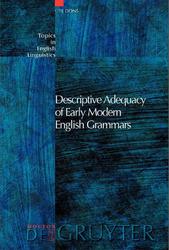
Models of the English grammars.
In view of the minor role English played at the beginning of the Early Modern English period, it is not surprising that the authors of the first English grammars had no suitable descriptive model at hand. They were inspired by grammars of other languages and mostly relied on grammars of Latin. Occasionally, they also looked at universal grammars.
In the period investigated, the grammar by Petrus Ramus and the work by William Lily and John Colet were most influential. Moreover, the influence of John Wilkins' work on language universals can occasionally be traced in Early Modern English grammars. The following overview of these grammars is meant to provide a better understanding of the English grammars.
Contents.
Acknowledgements.
1 Introduction.
1.1 The cultural climate.
1.2 The corpus of Early Modern English grammars.
1.2.1 William Bullokar: Bref Grammar for English (1586).
1.2.2 Paul Greaves: Grammatica Anglicana (1594).
1.2.3 Alexander Hume: Orthographie and Congruitie of the Britan Tongue (1617).
1.2.4 Alexander Gill: Logonomia Anglica (1619/1621).
1.2.5 Charles Butler: English Grammar (1634).
1.2.6 Ben Jonson: The English Grammar (1640).
1.2.7 Joshua Poole: The English Accidence (1646).
1.2.8 John Wallis: Grammatica Linguce Anglicance (1653).
1.2.9 Jeremiah Wharton: The English Grammar (1654).
1.2.10 James Howell: A New English Grammar (1662).
1.2.11 John Newton: School Pastime for Young Children: or the Rudiments of Grammar (1669).
1.2.12 Thomas Lye: The Child's Delight (1671).
1.2.13 Christopher Cooper: Grammatica Linguce Anglicana: (1685).
1.2.14 Guy Miege: The English Grammar (1688).
1.2.15 Joseph Aickin: The English grammar (1693).
1.2.16 A. Lane: A Key to the Art of Letters (1700).
1.3 Models of the English grammars.
1.3.1 William Lily and John Colet: A Short Introduction of Grammar (1549).
1.3.2 Petrus Ramus: Grammatica (1572).
1.3.3 John Wilkins: An Essay Towards a Real Character, And a Philosophical language (1668).
2 The parts of speech.
2.1 Parts of speech: Definition and inventory.
2.2 Nouns and adjectives.
2.2.1 Definition.
2.2.1.1 General definition.
2.2.1.2 Distinction between nouns and adjectives.
2.2.1.3 Distinction between common and proper nouns.
2.2.2 Morphological categories.
2.2.2.1 Number.
2.2.2.1.1 Regular plural formation.
2.2.2.1.2 Plural formation with i-mutation.
2.2.2.1.3 Plural formation with {-en}.
2.2.2.1.4 Plural formation with voicing of fricatives.
2.2.2.1.5 Plural formation with zero.
2.2.2.1.6 Summary.
2.2.2.2 Case.
2.2.2.3 Gender.
2.2.2.4 Comparison of adjectives.
2.2.3 Summary.
2.3 Pronouns.
2.3.1 Definition and classification of the pronoun.
2.3.2 Inventory of pronouns.
2.3.2.1 Personal pronouns.
2.3.2.2 Possessive pronouns.
2.3.2.3 Demonstrative pronouns.
2.3.2.4 Relative pronouns.
2.3.2.5 Reflexive pronouns.
2.3.2.6 Interrogative pronouns.
2.3.3 Summary.
2.4 Articles.
2.5 Verbs.
2.5.1 Definition.
2.5.2 Classification.
2.5.3 Description of the form inventory.
2.5.3.1 Morphological categories.
2.5.3.2 Inflectional endings.
2.5.3.3 The tense system.
2.5.3.3.1 The classical model and alternative models.
2.5.3.3.2 Morphological vs. syntactic formation of the tenses.
2.5.3.3.3 Formation of the preterite and the past participle.
2.5.3.3.4 Variants.
2.5.3.4 The moods.
2.5.3.4.1 The influence of classical models.
2.5.3.4.2 Imperative.
2.5.3.4.3 Infinitive.
2.5.3.4.4 Optative.
2.5.3.4.5 Potential.
2.5.3.4.6 Subjunctive.
2.5.3.4.7 Summary.
2.5.3.5 Modal auxiliaries.
2.5.3.6 Primary auxiliaries.
2.5.3.7 Defective verbs.
2.5.3.8 Impersonal verbs.
2.5.4 Summary.
2.6 Participles.
2.6.1 Definition and status.
2.6.2 Morphological categories.
2.6.3 Forms of the participle.
2.7 Adverbs.
2.7.1 Definition and status.
2.7.2 Semantic classes and other classifications.
2.7.3 Formation patterns.
2.7.4 Comparison of adverbs.
2.8 Conjunctions.
2.8.1 Definition.
2.8.2 Classification.
2.9 Prepositions.
2.9.1 Definition and status.
2.9.2 Classification.
2.10 Interjections.
2.10.1 Definition and status.
2.10.2 Classification.
2.11 The parts of speech: An evaluation.
3 The sentence.
3.1 Word order.
3.1.1 Unmarked word order.
3.1.2 Inversion.
3.2 The structure of the complex sentence.
3.3 The structure of the noun phrase.
3.3.1 Possible heads in the noun phrase.
3.3.1.1 Adjectival heads.
3.3.1.2 Expanded pronominal heads.
3.3.1.3 Verbal nouns as heads.
3.3.2 Premodification of the head.
3.3.2.1 Articles and adjectives/participles.
3.3.2.2 Nouns in the genitive case.
3.3.2.3 Determiner-(adjective-)noun.
3.3.2.4 Restrictions on the combination of several premodifying elements.
3.3.3 Postmodification of the head.
3.3.3.1 Relative clauses.
3.3.3.2 Prepositional phrases.
3.3.3.3 Participle constructions.
3.4 The structure of the verb phrase.
3.4.1 Possible realizations of the head.
3.4.1.1 Prepositional verbs as heads.
3.4.1.2 Auxiliaries as heads.
3.4.2 Possible expansions of the head.
3.4.2.1 Expansion by the primary auxiliary do (do-periphrasis).
3.4.2.2 Expansion by the primary auxiliary have.
3.4.2.3 Expansion by the primary auxiliary be.
3.4.2.4 Expansion by a modal auxiliary.
3.4.2.5 Expansion by a combination of several auxiliaries.
3.5 Concord.
3.5.1 Concord between subject and predicate.
3.5.2 Concord between noun and adjective.
3.5.3 Concord between relative pronoun and antecedent.
3.5.4 Concord between apposition and antecedent.
3.5.5 Summary.
3.6 Government.
3.6.1 Prepositions.
3.6.2 Verbs.
3.6.3 Conjunctions.
3.7 The sentence: An evaluation.
4 Results and outlook.
4.1 Morphology.
4.1.1 Word class models.
4.1.2 The parts of speech.
4.1.3 The impact of plagiarism.
4.1.4 Results from the Helsinki Corpus.
4.1.5 Conclusive evaluation.
4.2 Syntax.
4.2.1 Syntactic descriptions in Early Modem English grammars.
4.2.2 Results from the Helsinki Corpus.
4.2.3 Conclusive evaluation.
4.3 Outlook.
Notes.
Bibliography.
Name index.
Subject index.
Бесплатно скачать электронную книгу в удобном формате, смотреть и читать:
Скачать книгу Descriptive adequacy of early modern English gramma, Dons U., 2004 - fileskachat.com, быстрое и бесплатное скачивание.
Скачать pdf
Ниже можно купить эту книгу, если она есть в продаже, и похожие книги по лучшей цене со скидкой с доставкой по всей России.Купить книги
Скачать - pdf - Яндекс.Диск.
Дата публикации:
Теги: учебник по английскому языку :: английский язык :: Dons
Смотрите также учебники, книги и учебные материалы:
Следующие учебники и книги:
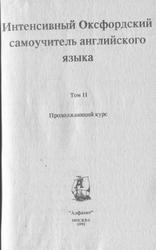 Интенсивный Оксфордский самоучитель английского языка, том 2, Продолжающий курс, Хорнби А.С., 1992 — Интенсивный Оксфордский самоучитель английского языка, Том II, Продолжающий курс, Хорнби А.С., 1992. Вторая часть известного во всем мире интенсивного курса … Книги по английскому языку
Интенсивный Оксфордский самоучитель английского языка, том 2, Продолжающий курс, Хорнби А.С., 1992 — Интенсивный Оксфордский самоучитель английского языка, Том II, Продолжающий курс, Хорнби А.С., 1992. Вторая часть известного во всем мире интенсивного курса … Книги по английскому языку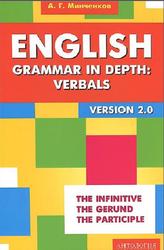 English Grammar in Depth, Verbals, Употребление неличных форм глагола в английском языке, Минченков А.Г., 2014 — В учебном пособии представлено современное описание неличных форм английского глагола (инфинитива, герундия, причастия). Оно состоит из двух частей теоретической и … Книги по английскому языку
English Grammar in Depth, Verbals, Употребление неличных форм глагола в английском языке, Минченков А.Г., 2014 — В учебном пособии представлено современное описание неличных форм английского глагола (инфинитива, герундия, причастия). Оно состоит из двух частей теоретической и … Книги по английскому языку Email english, Emmerson P., 2013 — Learners of English at intermediate or upper-intermediate level who want to write better emails. It can be used by learners … Книги по английскому языку
Email english, Emmerson P., 2013 — Learners of English at intermediate or upper-intermediate level who want to write better emails. It can be used by learners … Книги по английскому языку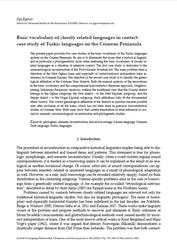 Basic vocabulary of closely related languages in contact, Egorov I. — The present paper provides two case studies of the basic vocabulary of the Turkic languages spoken on the Crimea Peninsula. … Книги по английскому языку
Basic vocabulary of closely related languages in contact, Egorov I. — The present paper provides two case studies of the basic vocabulary of the Turkic languages spoken on the Crimea Peninsula. … Книги по английскому языку
Предыдущие статьи:
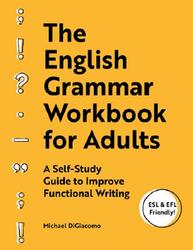 The english grammar workbook for adults, DiGiacomo M., 2020 — This book is divided into two parts. The first part is a collection of the most practical and commonly used … Книги по английскому языку
The english grammar workbook for adults, DiGiacomo M., 2020 — This book is divided into two parts. The first part is a collection of the most practical and commonly used … Книги по английскому языку Causative constructions in Japanese and English, Ciubancan M., 2014 — This book presents a contrastive analysis of causative constructions in Japanese and English. In view of the title, both syntactic … Книги по английскому языку
Causative constructions in Japanese and English, Ciubancan M., 2014 — This book presents a contrastive analysis of causative constructions in Japanese and English. In view of the title, both syntactic … Книги по английскому языку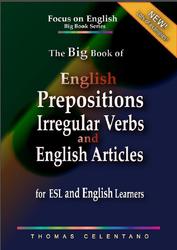 The Big Book of English Prepositions, Irregular Verbs, and English Articles, For ESL and English Learners, Celentano T., 2020 — This book goes beyond just being a guide to the correct use of English prepositions, irregular verbs, and English articles. … Книги по английскому языку
The Big Book of English Prepositions, Irregular Verbs, and English Articles, For ESL and English Learners, Celentano T., 2020 — This book goes beyond just being a guide to the correct use of English prepositions, irregular verbs, and English articles. … Книги по английскому языку Elementary Anecdotes in American English, Hill L.A., 1980 — Elementary Anecdotes in American English is the first in a series of three readers for students of English as a … Книги по английскому языку
Elementary Anecdotes in American English, Hill L.A., 1980 — Elementary Anecdotes in American English is the first in a series of three readers for students of English as a … Книги по английскому языку




